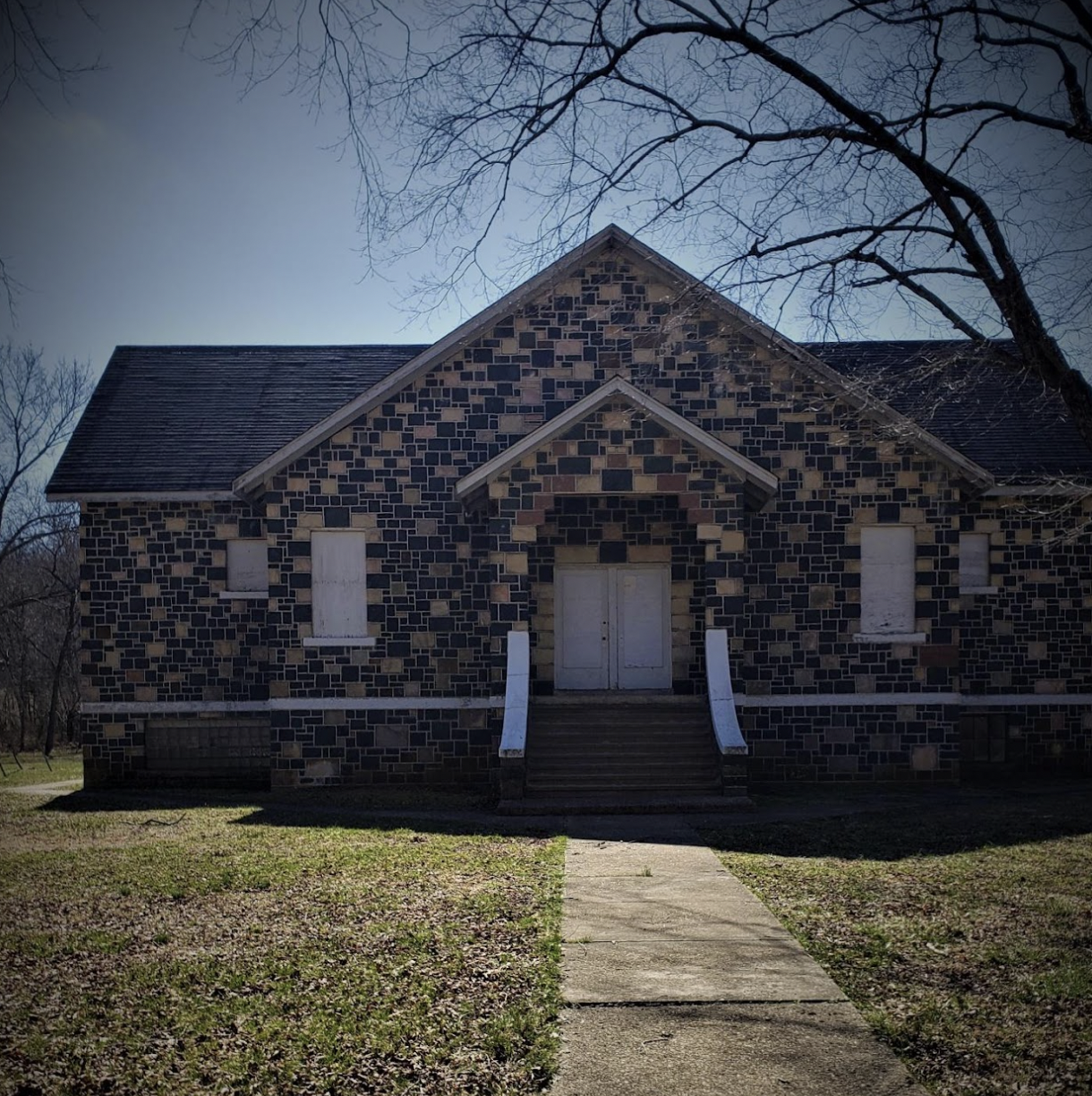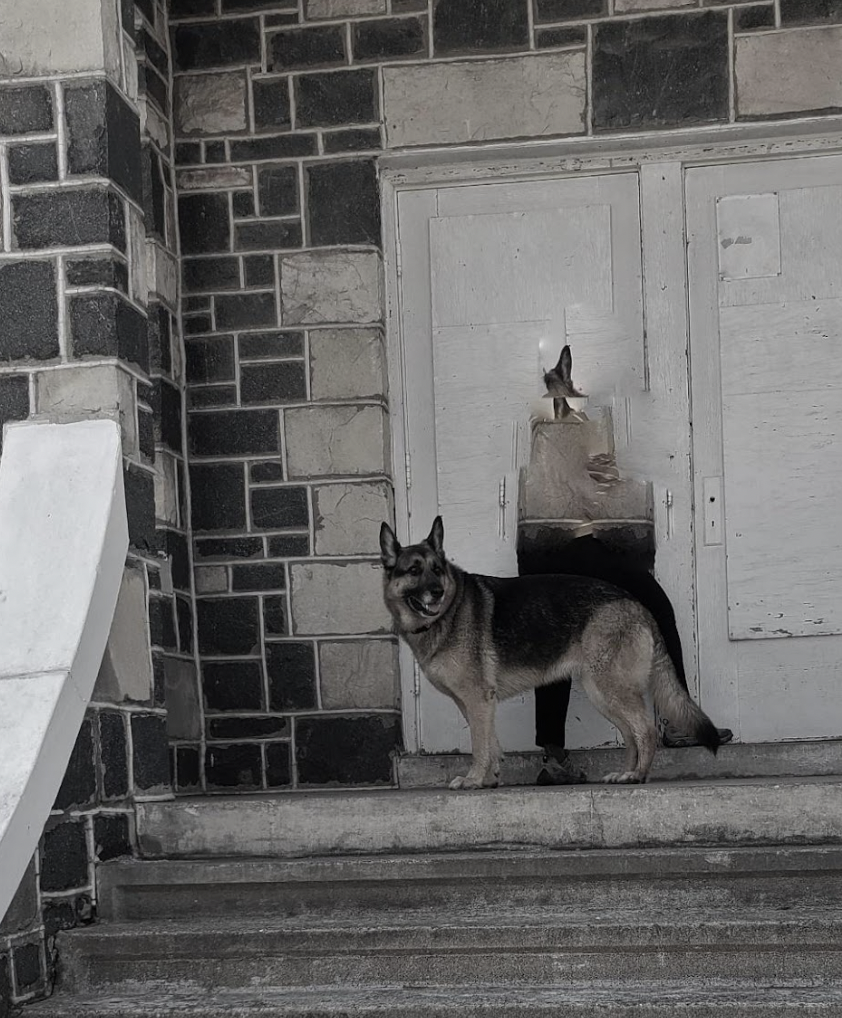Schoolhouse Rock
A road trip led me to visit Vulcan School on Highway BB in Vulcan, Missouri.
With my dog guarding the present, I stepped through the door of a one-room schoolhouse and enter the past.
One-room schoolhouse, c. 1855
The Sutton School, located one mile northeast of Vulcan, Missouri, was established by my great-great grandmother Stacy Catherine (Ruble) Sutton around 1855. The school was closed in 1861, re-opened in 1863, and continued until 1867.
Stacy Catherine (Ruble) Sutton was the great granddaughter of Peter R. Rubel (b. 1720). He emigrated from Bayern, Germany on the ship Francis & Elizabeth, which left Rotterdam some time in midsummer of 1742, stopped briefly in London and finally landed in the port of Philadelphia on September 21, 1742. This is a copy of the ship’s list: http://www.kichline.com/genealogy/kichship.htm
Port of Philadelphia mid 1700s
Average passages over the Atlantic Ocean took 10 1/2 weeks.
Peter Rubel settled on a farm in Codorus Township, York County PA a few miles from Hanover. A receipt is on file in the York County History Center, dated September 10, 1750, showing that he “took up” 100 acres, between Peter Stambach and Hans Eric Miller, for which the receipt says he paid 5 pounds “in Part.” He had four sons. One of the sons became the father of Stacey Catherine Ruble (by now the spelling changed from Rubel to Ruble).
Stacey left Pennsylvania and travelled to Missouri to be a teacher. There she met my great great grandfather William. For reasons unknown, Union soldiers came to their farm on December 21, 1862 and arrested him. The Confederacy recognized Missouri as its twelfth state, but Missouri did not leave the Union. Confusion, suspicion, and mistrust reigned in the Ozarks. Farms turned into battle skirmishes creating opportunities to snip rather than buy goods from neighbors. He was taken to the Gatriot and Myrtle Street Prison in St. Louis. Eventually he was released, but he was so ill that he died on the road and never made it home. He was 24 years old and had four children; one of them (John) became my great grandfather.
Lydia Caroline Wood Sutton is Stacey’s daughter-in-law. She married Stacey’s son, John Sutton who is my great grandfather.
Lydia came to Sutton Hollow as a single woman from another county in Missouri to teach school at the Sutton School. It would seem likely that she brought some teaching supplies, including a bell she used to call the children to order. When she was 34, she died of tuberculosis. John, my great grandfather, died 2 years earlier of tuberculosis. They had seven boys. The seventh child became my grandfather Otto.
One-room schoolhouse c. 1919
Otto (born 1899) taught in a one-room schoolhouse from August 4, 1919 to March 3, 1920.
Otto’s Affiliation with the Missouri State Teacher’s Association
His salary was $40.00 a month. (He left teaching because the pay was too low; he became a lead miner (St. Joe Lead Company).
Mining in St. Joe Lead Mines
Otto shared a grade and record book and it was passed from one teacher to the next.
An example of record keeping by Otto when he was teaching.
Otto also wrote in the record book, “The school board should not be allowed to get either rest or sleep until a library is provided for.”
In 1923, there were 75 books in the library valued at $35.00. Here are 43 titles listed by the library.
Bunker Hill Address
Greek Gods and Heroes
Patrick Henry
Robinson Crusoe Reader
Red Riding Hood
A Child’s Garden of Verse
The Tree Dwellers
Three Little Cotton Tails
Among the Giants
Our Birds and Their Nestings
Ten Boys
Seven Little Sisters
Book of Legends
Little Men
Horse Stories
How We Are Fed
Wings & Stings
Pinocchio
Good Health
Legends of the Red Children
Stories of Missouri
Hans Brinker
Kings in Exile
Man Without a Country
The King and the Golden River
Merchant of Venice
American Pioneers
Mark Twain
The Succession of Forest Trees
Stories of Pioneer Life
Christmas Carol
Franklin’s Autobiography
A Dog of Flanders
Story of the Great Republic
Longfellow’s Evangeline
The Hoosier School Boy
Missouri Hall of Fame
Thanatopsis
The City of Seven Hills
Lessons for Junior Citizens
Black Beauty
Hans the Eskimo
Lexington Concord
Sutton, Annapolis Consolidated, Missouri c. 1930
After consolidation, memories of one-room buildings with their outhouses, smokey stoves and water buckets faded. The journey to school became the new thing. The school bus becomes the central figure in my dad’s memory of his school years. But there was nothing ordinary about the bus back then. This is my dad’s account of riding the “bus” to school on Sutton Hollow Road, Missouri during the winter 1931.
It was bigger than a pick-up truck. It had a flat bed, wooden sides, and a metal roof. The truck’s door had a latch and spring making the door more cousin to a screen door than to a school bus door. At the center of seven-foot wide and twelve-foot-long flatbed was a small stove. They painted the truck blue, so they called it the Blue Goose.
When the truck stopped on the road in front of the farmhouse, Dad unlatched the door, climbed on the bed, and started building a fire out of brails and corncobs. After he got the stove’s fire going, he climbed off the truck, gathered wood from the pile, and hauled it to put by the stove on the Blue Goose.
It was the first stop on the eight-mile, meandering gravel road to the consolidated school in Annapolis MO. Dad was paid three dollars a month or 15 cents a day for hauling, chopping, and stacking wood to warm up the Blue Goose
Dad’s attendance records. Perfect attendance, but how could he be absent given his bus duties?
At its peak the Blue Goose hauled 15 kids. When my dad told me this story to me in 2004, he still remembered many winter days when the temperature was barely above zero.
One time a kid by the name Lewis Ruble took a can of soup to school for lunch. His noodle soup blew up on the stove in the classroom. He forgot to punch a hole in it.
York County has many one-room schoolhouses like this one, and this one, or even this one!
The material on one-room schoolhouses is why I love visiting history centers. The York County History Center helped me understand my past. I always knew I wanted to teach; I didn’t know why. I guess you could say it is my blood—five generations and counting.
The York County History Center helped me to understand my attraction to York. When I arrived here many years ago, I felt like I had come home. I never knew why but it was a strange feeling that I couldn’t let go. Eventually, through a series of coincidences, I learned that I am the great great great great great …granddaughter of Peter Rubel of York County who is buried near Jefferson, PA. It still gives me goosebumps every time I think of him and his descendants.








